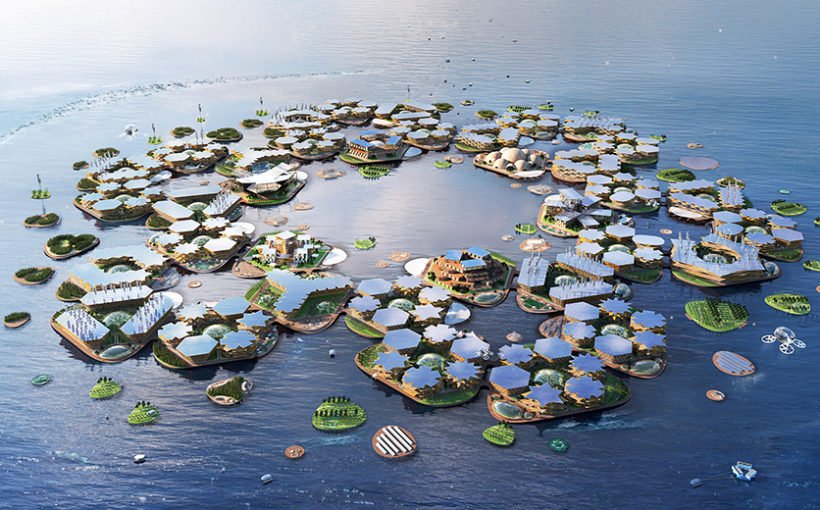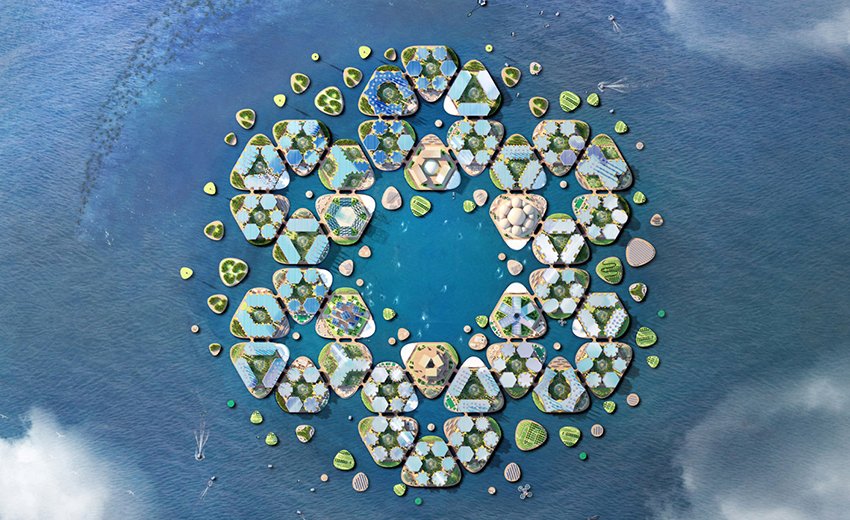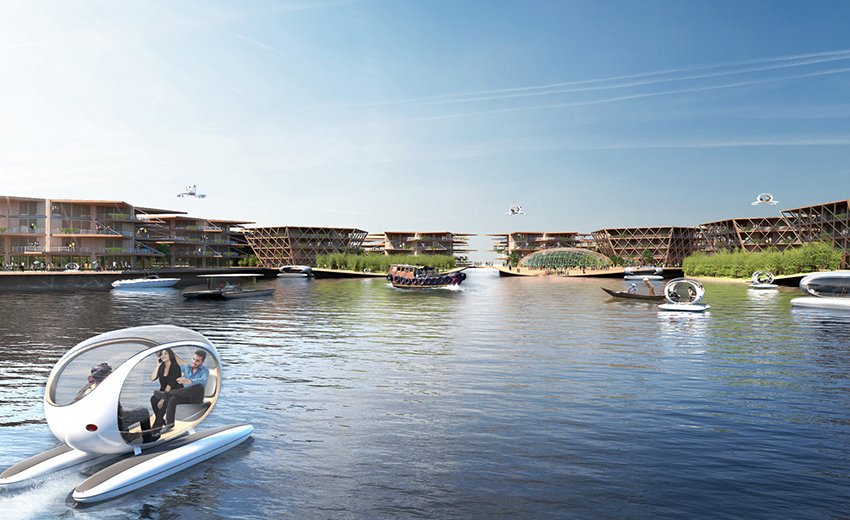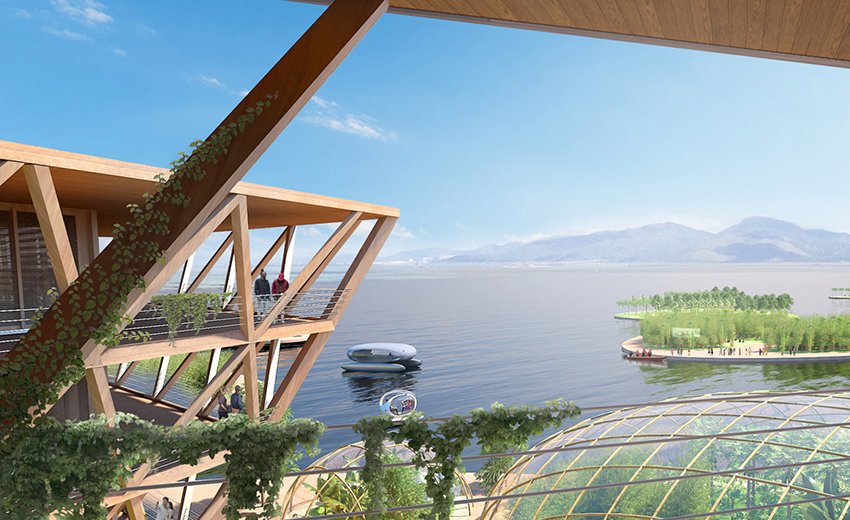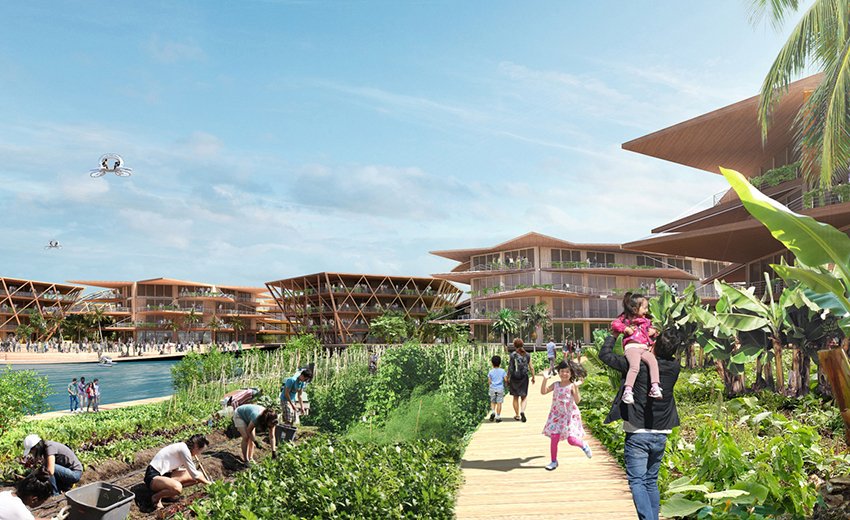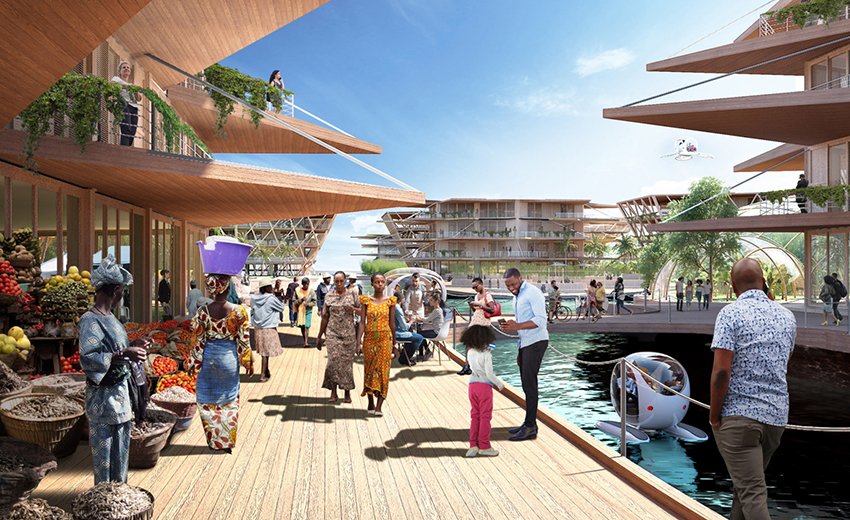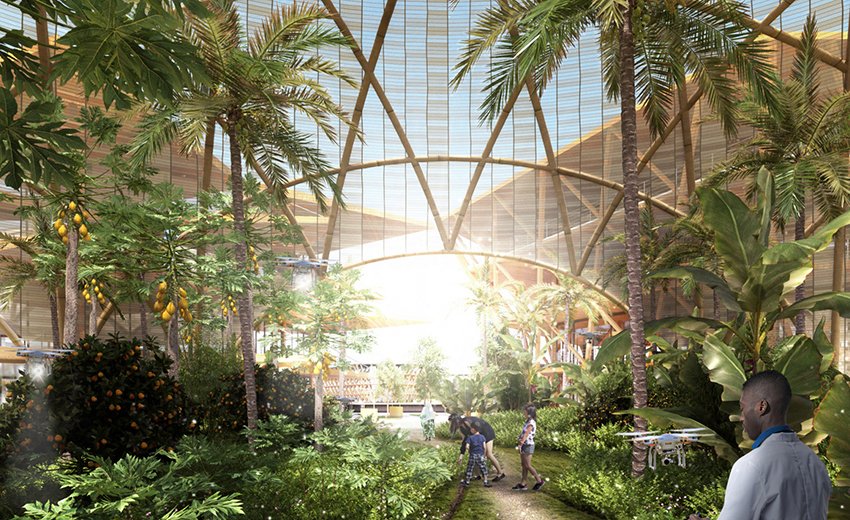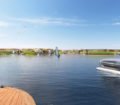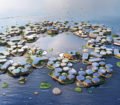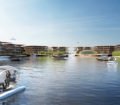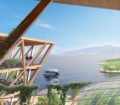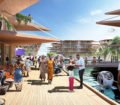To face rising sea levels, the architects of Bjarke Ingels Group designed a modular floating city. A futuristic city for climate refugees.
The floating cities of the future will be autonomous, non-polluting and car-free, anchored 1 or 2 kilometres from major coastal cities. The projects are advancing: a prototype, supported by the UN, will soon be produced. Its name: Oceanix.
This new high-tech city, organised in hexagonal clusters of four to seven-floor buildings, was designed by the Danish architect Bjarke Ingels and commissioned by the UN to create an escape route against rising waters. A group of six platforms constitutes a “village”, and an entire city is made up of six villages.
The first version spans 75 hectares and will be located off the New York coast. “There will be six villages which themselves are made up of six neighbourhoods. Oceanix will be able to accommodate 10,000 inhabitants – 1,650 per village and 300 per neighbourhood“, explains Bjarke Ingels. Each of these small islands could contain accommodation, cultural spaces, stadiums, places of worship etc.
Sustainability at the heart of the project
These cities are anchored to the ground in order to be able to resist natural catastrophes. They will be protected by a barrier thanks to the exposure of underwater materials to electric currents. “These plots will have their own fresh water, power and food”, confides the architect, “thanks to underwater farms that are grafted onto the buildings.”
With the demographic pressure and the migration of people due to global warming, “the equivalent of New York City will have to be built every month for forty years“, says Bjarke Ingels. The first floating city of the future is expected to emerge in a region close to the tropics, probably in Southeast Asia or Africa. If the experiment is satisfactory, there is nothing to prevent the proliferation of these brand-new coastal cities.
Tags: Bjarke Ingels, climate change, floating city, Oceanix, UN



































